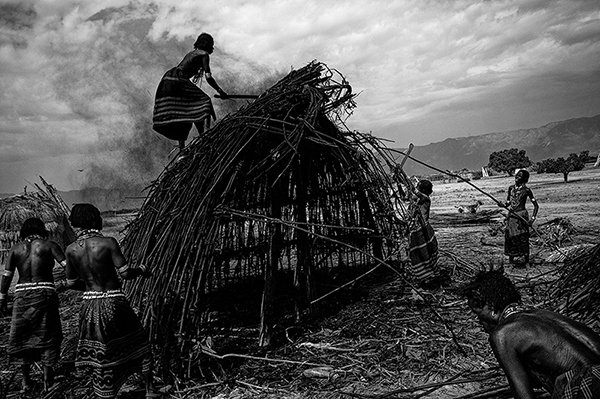Leica Society International Announces the 2022 Photo Grant Recipient: Monika Bulaj
LHSA – The International Leica Society is pleased to announce the recipient of the 2022 LHSA Photography Grant in the amount of $5000 and a Leica M10-R with a 50mm lens (courtesy of Leica USA). Congratulations to Monika Bulaj!
Monika Bulaj is an award-winning photojournalist, reporter, documentary film-maker, and educator, based in Italy. Her work on minorities at risk, faiths and shared sacredness in Eastern Europe, the Middle East, the Caucasus, Central Asia, Africa, and Caribbean, has been recognized, among others, by Eugenio Montale Award 2022, nomination for the National Geographic Fellowship 2020, The Aftermath Project Grant, Leonian Award of W. Eugene Smith Memorial Fund, TED Fellowship, Bruce Chatwin Special Award, Grant in Visual Arts from the European Association for Jewish Culture. Bulaj's work has appeared in The Guardian, Granta Magazine, National Geographic, The New York Times, TIME, Courier International, RevueXXI, La Repubblica, and GEO, among others. She has published 10 books, the latest being Nur. Afghan Diaries with National Geographic (in Polish) and Where Gods Whisper, with Contrasto (in English and Italian). She has displayed her work in more than 90 personal exhibitions around the world. Bulaj was the first women to receive the Italian National NonViolence Award “for her work as a photographer, reporter, and documentary-maker which sheds lights on humanity living in the most hidden yet most evident boundaries on earth, for showing war through its consequences, for investigating mankind’s soul, our eagerness for religiosity, tenderness, and dignity. Bulaj makes the invisible visible by exploring people’s soul, by uniting humanity in an image.”
About her project, Exiles
About these two holocausts, the indigenous Americans and the African victims of the slave trade, carried out systematically for centuries, what is worth telling in the modern world, built on exploitation and racism? In Amerindian mythology all the pieces of humanity, of good and of bad, in the divine and in the demonic, are connected. The extraordinary metaphysics of the Indians communicate and put into practice an encompassing global compassion. I worked in Benin, Sierra Leone, South Sudan, Sudan, Uganda, Ethiopia, Rwanda, Egypt, Morocco, Libya. I followed Africa in exile, on the routes of 16th century smugglers: in Cuba and Haiti. I worked also on the social consequences of this centuries-old double holocaust: slavery, exploitation, escapes, the smuggling of migrants, racism. This new project will be dedicated to Brasile and Benin. In Brasil i wish to narrate the marvel of a vast swathe of endangered nature, trying to read it through the imaginary world and emotions of the peoples who live there. I will start working from the Yanomami and Xavante tribes. I will hence focus on the Caboclos, the Africans who fled from the prisons of Salvador of Bahia, mixed with the indigenous peoples and white colonialists of Portugal, and I will work about Catimbó-Jurema and candomblè rituals, and also about Santo Daime, a syncretism church uniting ancient local cults to Christianity. In Benin i will continue the work on the voodoo. ,What interests me in religions is the quest of incarnation or embodiment, how the body manifests such an experience. My research explores the shared sacred places, the ambiguity of the pilgrimages, the memory of the body, the “liberation through the senses” during the rituals, the archetypal elements (fire, water, veil, scripture), the cult of the dead, and moreover does not ignore the signs of sacred in everyday life.
LHSA wishes to thank our preliminary judges and this year’s group of finalist judges, Maggie Steber, Craig Semetko, Sara Terry, Peter Turnley, and the late Eamonn McCabe.











